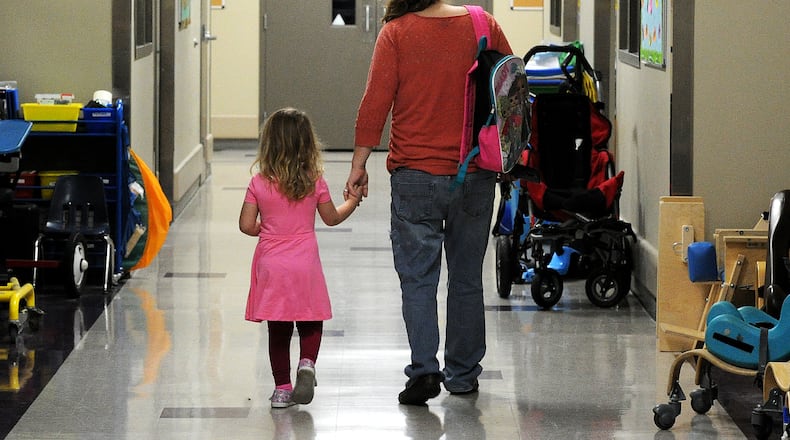In speaking with dozens of experts, parents, elected officials and front-line care providers, our investigation has shown that the child care crisis is too large for any one city, organization or business to solve on its own. A significant investment of state funds is necessary to address it.
Assuming a state’s budget is the best way to determine its priorities, we were heartened to see Gov. DeWine in his January address give extra attention to child care and early childhood education in his proposed 2024-2025 Executive Budget.
We believe, however, that the Ohio House did a disservice to Gov. DeWine’s proposed budget by stripping out the allocated $150 million of federal ARPA funds to help pay child care costs for workers in care-focused and other critical occupations, among other cuts that included $10 million over the biennium that would have supported early childhood mental health credentialed counselors and consultation services, and another nearly $20 million over the biennium for the state’s evidence-based home visitation program, Help Me Grow.
For the 2024-2025 state budget, which will be voted on by the Ohio Senate in the coming weeks, we ask that the Ohio Senate restore those funds to the Governor’s originally proposed levels.
Further, we support the Governor’s proposal to create the new Ohio Department of Children & Youth, which would consolidate programs from six different existing state agencies and would streamline services. While the creation of the agency was maintained in the House Omnibus bill, its $48 million reduction over the biennium compared to the Executive Budget would hamper its success. In order for the new agency to succeed, we ask that it be appropriately funded from the outset.
Still, there are many other budget priorities worth celebrating, including an additional $46 million per fiscal year to expand preschool slots that will help families with 3- and 4-year-olds, and increased eligibility for working parents to help pay for child care from 142% of the federal poverty level (FPL), currently $13.46 an hour or less for a single mother and one child, to 160% of the FPL. It is worth noting that this is still a low threshold for eligibility, with other states taking much bolder steps. New Mexico, the state with the highest eligibility cap, used ARPA funds to increase eligibility for its Child Care Assistance Program up from 200 percent of the FPL to 350 percent.
The child care crisis touches every part of our society and will require extensive support from the state to reverse. Gov. DeWine’s proposed Executive Budget is a good first step — but even it does not go far enough. Cuts from the House Omnibus bill will dramatically slow the relief that Ohio families need. We ask that the Ohio legislature restore the funding to their originally proposed levels, or more.
Our state needs to invest in its future, our children, and to recognize that families require this investment of public funds starting at birth, not kindergarten. This investment will pay dividends for parents struggling to afford child care, the employers who are losing employees forced to choose between work and their children, and, of course, the children themselves.
About the Author
